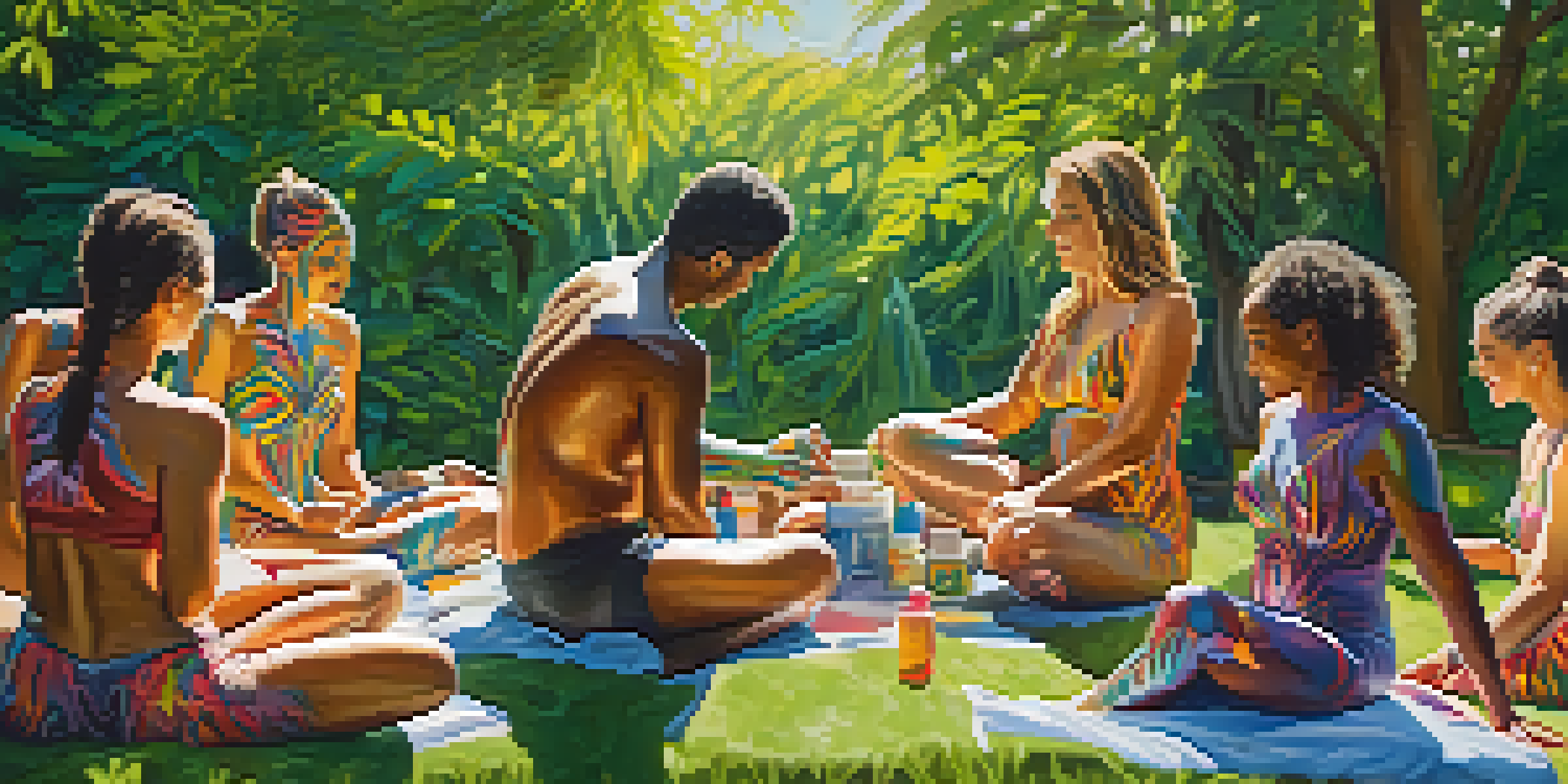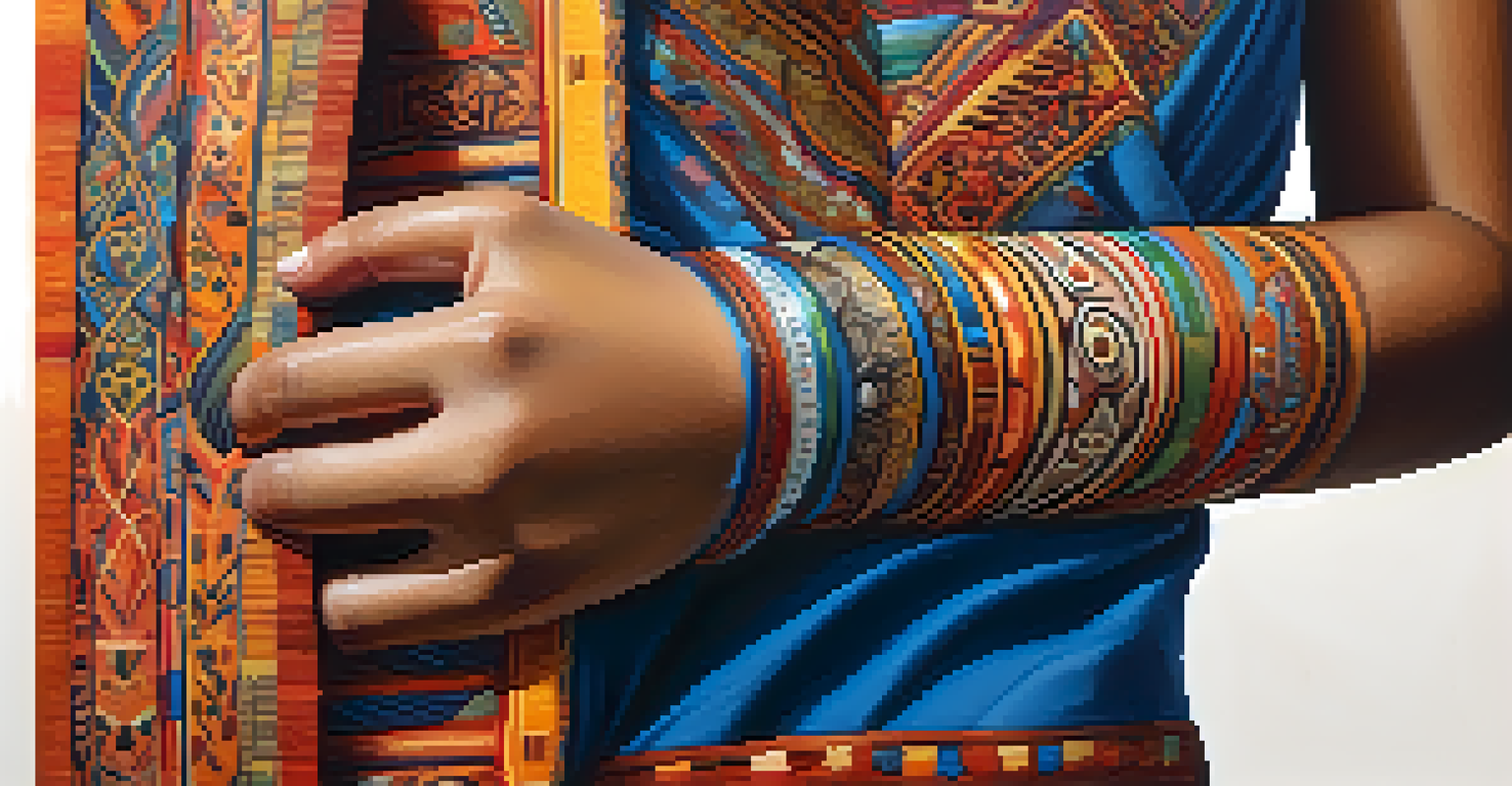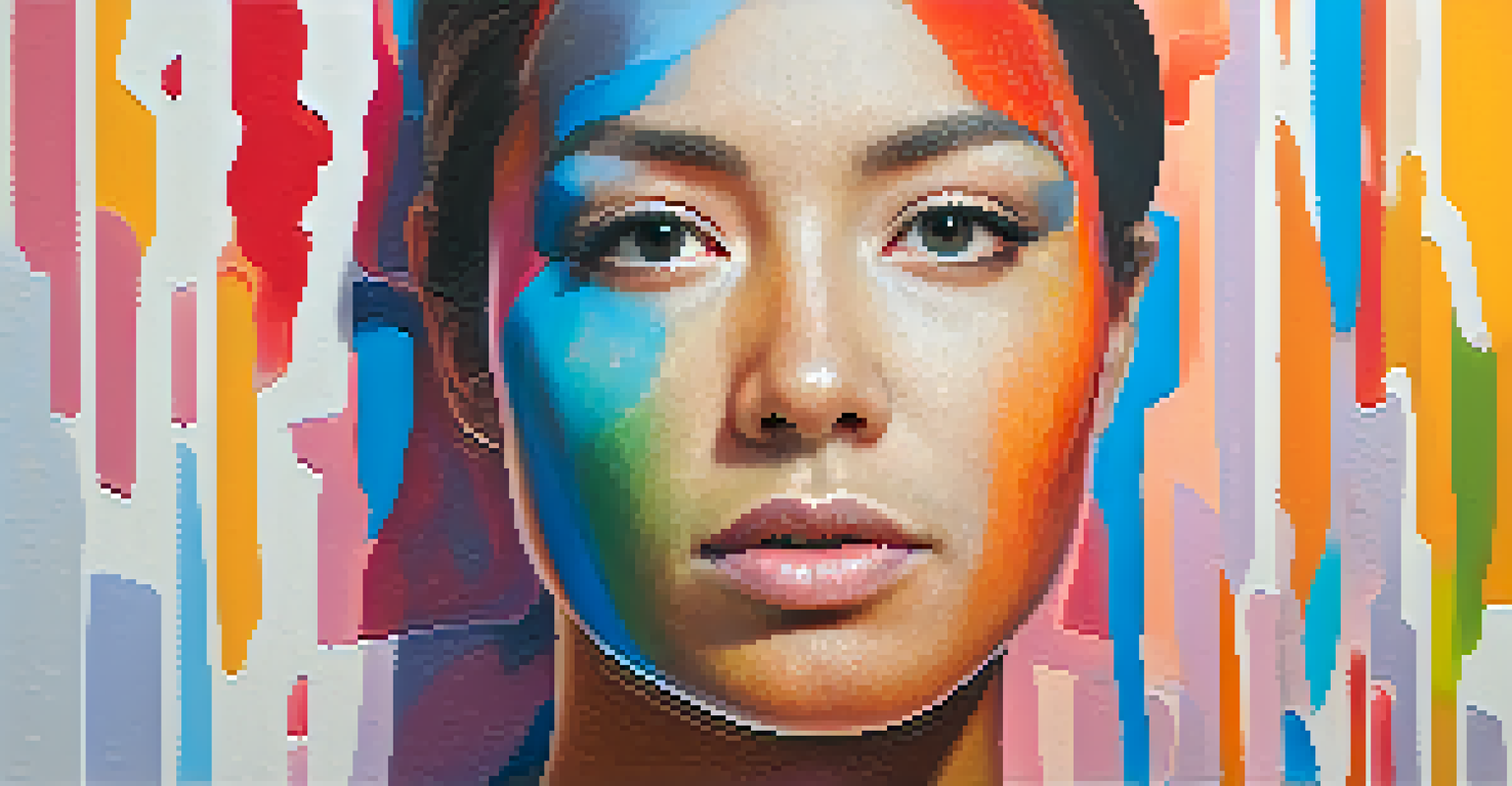Body Painting and Identity: How Art Reflects Personal Stories

The Intersection of Art and Identity in Body Painting
Body painting serves as a powerful medium for self-expression, allowing individuals to showcase their identities in vibrant colors and designs. This art form transcends traditional boundaries, offering a canvas that is both personal and public. As the body becomes a living artwork, it invites viewers to engage with the stories behind the paint.
Art is the most beautiful of all lies.
Each brushstroke can represent a different aspect of a person's life, whether it's cultural heritage, personal experiences, or emotional states. For instance, a design inspired by ancestral symbols can connect the artist to their roots, while abstract patterns might express their current feelings. This dynamic relationship between the body and art fosters a deeper understanding of human experiences.
Moreover, body painting challenges societal norms about beauty and identity, encouraging people to embrace their uniqueness. In a world often focused on conformity, this art form celebrates diversity and individuality, reminding us that our stories are valid and worthy of expression.
Cultural Significance: Body Painting Through the Ages
Historically, body painting has played a significant role in various cultures, often used in rituals and traditions. Indigenous peoples around the world have adorned their bodies with intricate designs to signify status, community, and spiritual beliefs. These practices not only honor ancestry but also reinforce a sense of belonging within a group.

For example, the Māori of New Zealand use moko, a form of tattooing that tells the story of an individual’s lineage and achievements. Similarly, African tribes often use body paint for ceremonial purposes, symbolizing important life events. Such practices highlight how body art serves as a living narrative, preserving cultural identity through generations.
Body Painting as Self-Expression
Body painting allows individuals to showcase their identities through vibrant designs, fostering personal storytelling and emotional connection.
In contemporary contexts, artists draw inspiration from these traditions, infusing modern interpretations into their work. This blend of past and present not only keeps cultural stories alive but also invites new audiences to appreciate and understand diverse backgrounds.
Body Painting as a Form of Personal Narrative
For many, body painting becomes a form of storytelling, allowing individuals to visually communicate their life experiences. Each design can embody memories, challenges, and triumphs, creating a personal narrative that resonates with both the artist and the observer. This transformative process empowers individuals to reclaim their stories in a visually impactful way.
The purpose of art is not a rarified, intellectual distillate; it is life, intensified, and a deeper understanding of human experience.
Consider an artist who uses body painting to depict their journey through mental health struggles. By illustrating emotions through colors and shapes, they create a dialogue around topics often shrouded in stigma. This not only fosters personal healing but also encourages others to share their own experiences, creating a sense of community.
Additionally, the temporary nature of body paint adds a unique layer to this narrative. As the paint fades or is washed away, it serves as a reminder that our identities are fluid, constantly evolving with each new experience. This concept invites reflection on the stories we carry and how they shape us.
The Emotional Impact of Body Art on Identity
Engaging in body painting can have a profound emotional impact, often resulting in increased self-esteem and confidence. When individuals see their bodies transformed into art, it can shift their perception of self-worth and beauty. This newfound appreciation for oneself fosters a deeper connection to personal identity.
Moreover, the act of painting can be a cathartic experience, providing an outlet for emotions that may be difficult to express verbally. Many artists report feeling liberated as they apply paint to their skin, using this intimate process to explore and confront their feelings. This emotional release can be both healing and empowering.
Cultural Heritage in Body Art
Historically, body painting has served as a vital cultural practice, preserving traditions and reinforcing community identity across generations.
In this way, body painting not only serves as a visual representation of identity but also as a therapeutic tool. It encourages individuals to embrace their authentic selves and to celebrate their stories in ways that resonate on a deeply personal level.
Community and Connection Through Body Painting
Body painting often brings people together, creating opportunities for connection and community building. Workshops and events centered around this art form invite individuals to express themselves collectively, fostering a sense of belonging. Participants share techniques, ideas, and stories, enriching their collective experience.
These communal gatherings can serve as safe spaces where individuals feel free to explore their identities without judgment. As they paint each other’s bodies, they engage in meaningful conversations about their backgrounds and experiences. This collaborative process not only strengthens individual narratives but also creates a tapestry of shared identities.
Furthermore, social media has amplified this sense of community, allowing body painters to connect with a global audience. Artists can showcase their work, share stories, and inspire others, creating a digital space where diverse identities are celebrated and respected.
The Role of Technology in Modern Body Painting
Advancements in technology have significantly influenced the world of body painting, introducing innovative tools and techniques. Digital art software now allows artists to create designs that can be projected onto the body, blurring the lines between traditional and digital art forms. This fusion expands the possibilities for expression and creativity.
Additionally, social media platforms provide a stage for artists to showcase their work, reaching audiences far beyond their local communities. This increased visibility encourages collaboration and experimentation, as artists draw inspiration from one another's styles and techniques. The result is a vibrant and dynamic body painting landscape that evolves with each new trend.
Community Through Shared Creativity
Body painting creates opportunities for connection and dialogue, fostering a sense of belonging and collaboration among participants.
However, while technology enhances creativity, it also raises questions about authenticity and the essence of body art. As artists navigate these new tools, they must find a balance between innovation and the deeply personal nature of their craft, ensuring that their stories remain at the forefront.
Future Directions: The Evolution of Body Painting and Identity
Looking ahead, the future of body painting is ripe with possibilities as artists continue to explore new mediums and themes. As conversations around identity evolve, body painting will likely reflect these changes, addressing contemporary issues such as gender, race, and social justice. This adaptability ensures that body painting remains a relevant and impactful form of expression.
Moreover, as society becomes more accepting of diverse identities, body painting can serve as a powerful tool for advocacy. Artists can use their work to challenge stereotypes and promote understanding, fostering dialogue around issues that matter. By sharing their stories, they can inspire others to embrace their own identities unapologetically.

Ultimately, body painting will continue to be a vibrant expression of personal and collective narratives, reminding us that art is a reflection of who we are. As we celebrate our identities through this medium, we create a more inclusive and compassionate world.